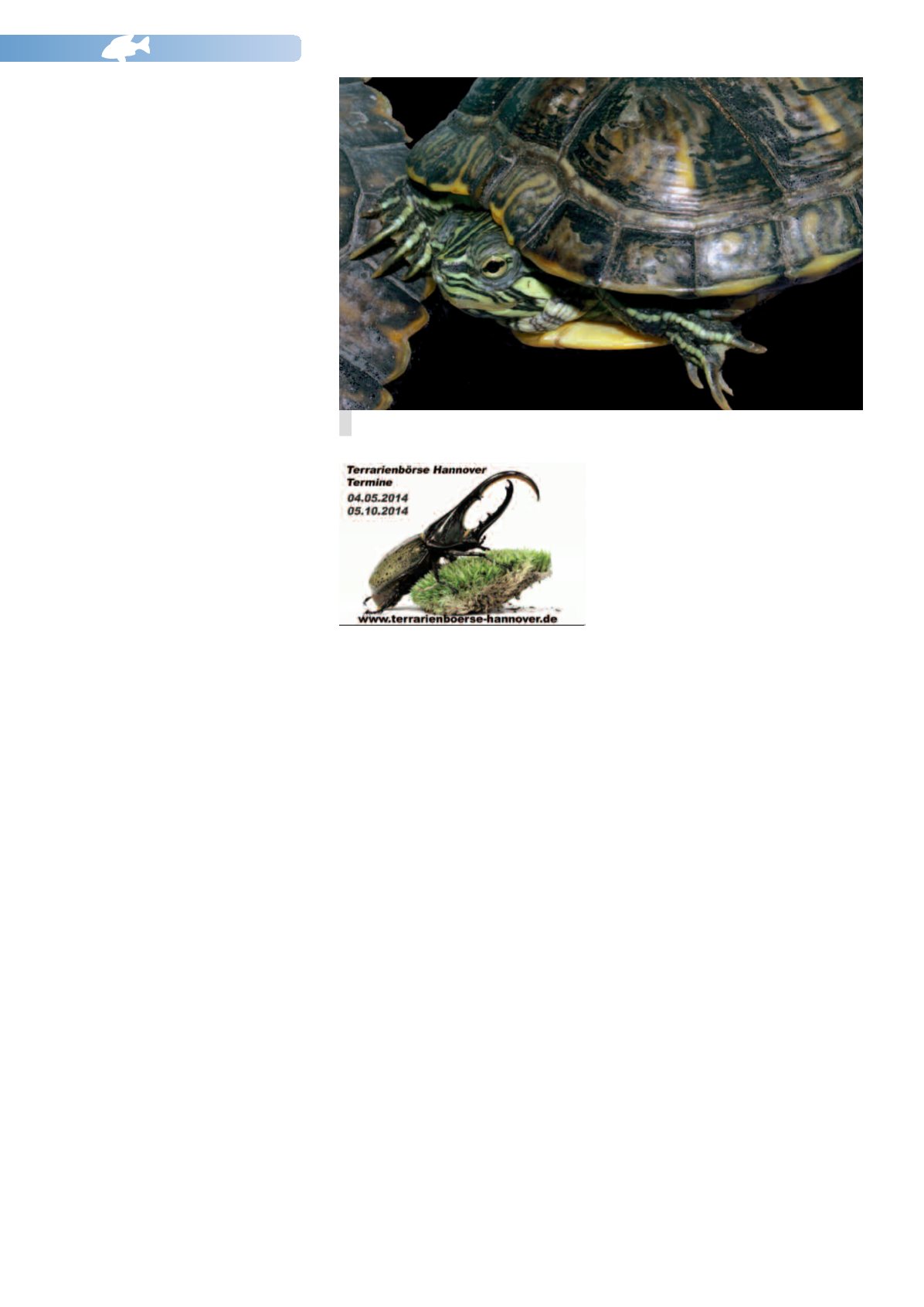
NEWS 110
40
a question of exclusively captive-bred
stocks. But in that way they were easily
able
to
prevent
the
unwanted
importation of these animals, because a
species on the ”endangered”list requires a
permit to be imported alive into the EU.
.
This ”European solution” has (not for the
first time and quite certainly not for the
last) made a complete laughing-stock of
the authorities. Because, firstly, it has
simply resulted in the demand for baby
turtles being satisfied by other species,
which are now being released instead of
Red-Ears; and secondly this piece of
imbecility makes it difficult for people
working in nature conservation to catch
released turtles and pass them on to
interested terrarium enthusiasts. Because
what wasn't taken into account is that the
people involved in drafting conservation
legislation aren't biologists but officials.
They haven't the first idea of why an
animal species is listed as "endangered"
and the majority of them believe that the
Red-Ear and the American Bullfrog
(
Lithobates catesbeianus
, formerly
Rana
catsesbeiana
, which presents similar
problems) actually need to be protected
in the wild - ultimately such species are
strictly or specially protected under
federal conservation legislation. In the
final analysis the listing of the Red-Ear and
the Bullfrog is a misuse of legislative
powers by politicians, who act as if we
were living in a feudal system rather than
a democracy, and the results are morally
highly questionable.Whether or not trade
restrictions
contribute
to
species
conservation remains a matter of debate
in each individual case. But it is extremely
disturbing when generally accepted laws,
designed solely for the purposes of
conservation, are misused for power
politics and populist purposes.
The alternative subspecies
Because Red-Ear babies can no longer be
brought into the EU, the trade has turned
its attention to other turtles. These are
mainly two further subspecies of
Trachemys scripta
, namely the Yellow-
Eared Turtle (
T. scripta scripta
) and the
Cumberland Turtle (
T. scripta troosti
). Both
are again bred on farms. All the
subspecies of
Trachemys scripta
are
distinguishable only on the basis of head
pattern. In the Red-ear there is a broad,
horizontal, bright orange-red band
behind the eye, in the Yellow-Ear a yolk-
yellow vertical band. In the Cumberland
Turtle the band is horizontal but yellow
and much narrower than in the Red-Ear.
Even so the Cumberland Turtle has been
regularly incorrectly identified as a "faintly
marked" Red-Ear.
Subspecies - what does that actually
mean?
Until the 1970s the term subspecies was
used rather indiscriminately. A formwould
be called a ”subspecies” if it was thought
that it was a geographical variant of an
otherwise very similar, already known
species.
With advances in our knowledge of
species this poorly-defined concept has
met with some opposition. Nowadays
there are zoologists who completely
reject the term subspecies and speak
exclusively of species. But that doesn't
accord with the situation in the wild, as an
important characteristic of subspecies is
that mixed populations occur where the
distributions of two subspecies meet, and
in such places individuals resemble
neither one subspecies nor the other, but
have characteristics somewhere in
between the pure subspecies. Such
populations are termed intergrades and
their existence supports the classification
of the main populations as subspecies.
Only if the zone of contact ceases to exist
- for whatever reason - and geographical
isolation of the main populations results,
is there any justification for describing
them as separate species. Ultimately this is
the way in which species have evolved
since time immemorial in the course of
evolution. Usually, at any rate.
Keeping the subspecies pure
In the terrarium hobby the object of
keeping animals isn't so much one of
social contact with other life forms, as
amphibians and reptiles are spiritually
too distant from us humans. Anyone
interested in owning a pet would be
better off with a dog or a parrot, even
though some large lizards occasionally
become really nice pals. But never swamp
turtles. Anyone who is interested in
Adult male Cumberland Turtle. Note the typical claws.


